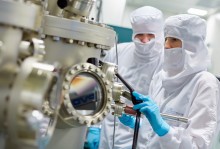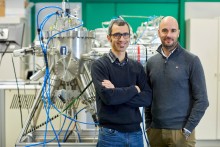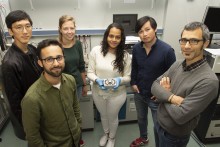Related news by tag Félix Casanova
CIC nanoGUNE is participating in two European projects to train young researchers
Edurne Sagasta, winner of the GEFES 2019 Award for best experimental thesis
This thesis explores the Hall spin effect, an effect that takes place in metals with spin-orbit coupling and allows charge currents to be converted into spin currents and vice versa. These conversions are of huge technological interest as they have the potential for use in the process to write magnetic memories (like MRAMs) and to read them (as in spin-based log circuits, a recent proposal by Intel). This research has revealed the mechanisms that contribute towards this effect in certain metals, such as platinum (Pt) or tantalum (Ta), which has made it possible to show how the efficiency of this conversion can be enhanced. Platinum (Pt) has also been combined with graphene to produce a device that can efficiently convert spin currents into charge ones.
The Hall spin effect is related to the anomalous Hall effect, known since the 19th century but little understood until recently. The second part of the thesis shows that this relationship in ferromagnetic materials is more complex than previously thought.
Edurne Sagasta
Edurne Sagasta studied physics at the UPV/EHU-University of the Basque Country and after getting a Master’s degree in Nanoscience and Advanced Materials at the same university, she started her PhD thesis at nanoGUNE. ”After studying Physics at university, I wanted to do something that would be more practical. At the same time, I wanted to get involved in a project with more people and have the chance to visit different labs across the world; in short, to embark on a research project,” said the researcher. "Once I had finished my PhD, I decided to make the leap to the world of industry, and right now I am working for the company Mondragon Assembly,” she said.
CIC nanoGUNE and INTEL bring the MESO technology a step closer to reality
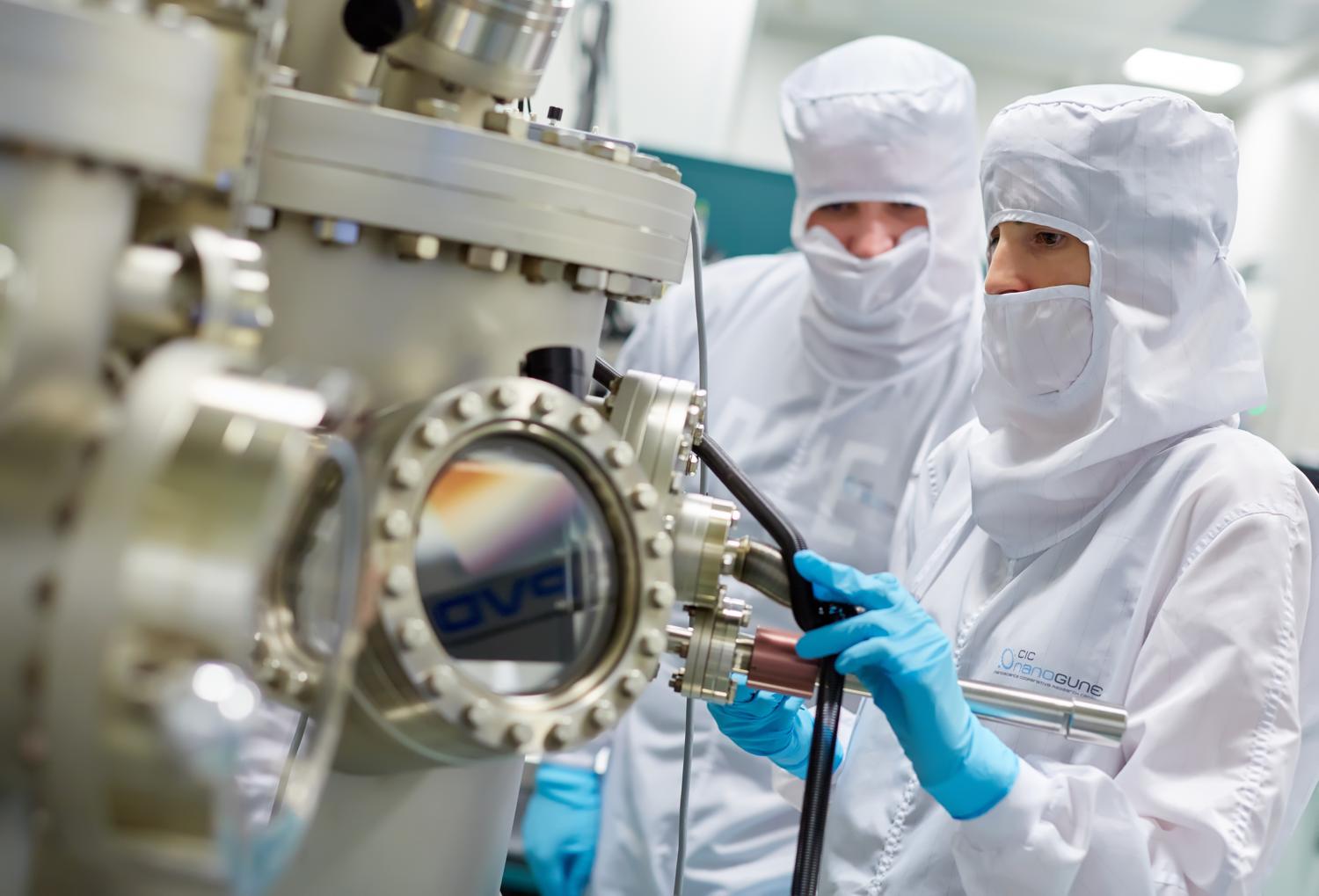
Finding a replacement to current CMOS technology in electronics that can be smaller, faster and, most importantly, with less energy consumption is a global challenge. Recently, Intel proposed what they refer as the “MESO” logic, a new technology that combines memory, interconnections and logic requirements for future computing needs, which might allow to maintain Moore’s law beyond CMOS while being more energy efficient.
In order to prove the feasibility of this disruptive technology, Intel and nanoGUNE have been joining forces in the last one and a half years. “The core element of MESO logic has two active parts. One part “reads” the information from the memory (a magnetic bit), which uses a unique effect known as ‘spin Hall effect'. The other one “writes” the magnetic bit using the magnetoelectric effect of certain materials”, explains Ikerbasque researcher Fèlix Casanova, who is leading the “MESO” project at nanoGUNE. Whereas the team of Components Research at Intel have proposed this technology, the group of nanodevices at nanoGUNE is a world-renown expert in the spin Hall effect. “According to the calculations of Intel’s team, we need the two parts to operate at the same voltage for the circuit to work: 0.1 Volt. The biggest problem is that previous devices using this spin Hall effect could only provide 10 nanoVolt, that is, 10 million times less. The big challenge is thus to increase this output voltage for the “reading” part”, adds Casanova.
Now, the first results of these joint efforts are being published in the journal Nature Electronics. The groups of nanoGUNE and Intel have been able to increase by 10,000 times this voltage, by simply using a better design but with the standard material for this effect, platinum. Although they still did not reach the final value for this technology to work, they unveil different paths on how to achieve it. First, the signal given by the device they have designed scales when the dimensions are reduced, which is a requirement for any technology to be introduced in the market (otherwise miniaturization would not be possible). Second, they identify the exact role of the materials in the device, and estimate that certain materials (like the recently discovered topological insulators) have the necessary properties that should allow them to bridge the remaining gap of 1,000 times enhancement for the 0.1 Volt goal. These results, thus, bring the MESO technology a step closer to reality.
A project coordinated by CIC nanoGUNE receives nearly 4 million euros from the European Commission
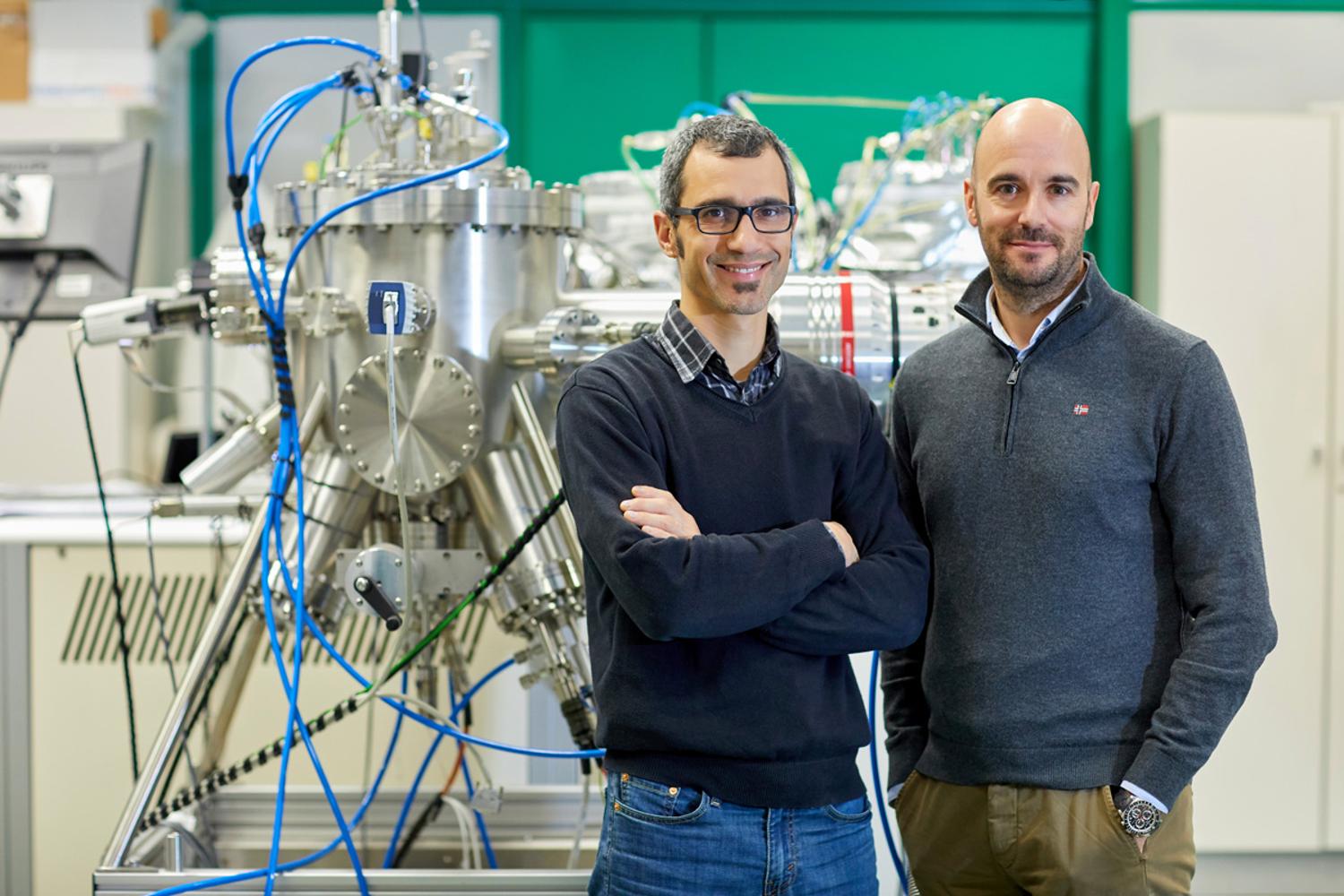
SPEAR has been selected by the European Commission for funding within its ITN programme. The 4-year project will receive nearly 4 million euros. This funding will be used mainly to fund the recruitment and high-level training of 15 pre-doctoral researchers. SPEAR is led by Fèlix Casanova, an Ikerbasque Research Professor in the Nanodevices Group at nanoGUNE.
“The research aims to find new materials with strong spin-orbit coupling, to explore new phenomena associated with these materials, and to develop devices based on these phenomena for the upcoming generation of computer memories and processors,” said the head of the project at nanoGUNE. “Unlike conventional RAM memory, data will not be stored in the form of electric charge or current flows, but by means of magnetic storage components in the next generation of memories, such as MRAM (Magnetic Random Access Memory). To substitute current microprocessors using silicon transistors we also have various candidate technologies, such as spin logic or MESO logic, machine learning and neuromorphic computing, which would stand to benefit from these new materials,” added Fèlix Casanova.
CIC nanoGUNE collaborates with Intel to open up the way for future computers
According to the Ikerbasque researcher Fèlix Casanova, who is leading the “MESO” project at nanoGUNE, there are two unavoidable challenges that will drive the transition towards new electronic technologies. The first one, inherent to the current CMOS technology (based on silicon and used on a massive scale), is its physical limit. “The number of transistors integrated in a chip has been doubling every two years, but this scaling has a limit and when we make the transistor too small sometime soon, it will no longer work because we will lose ‘control’ over the electrons.
Fèlix Casanova receives the 2020 Intel Outstanding Researcher Award
Finding a replacement to current technology in electronics that can be smaller, faster and, most importantly, with less energy consumption is a global challenge. Fèlix Casanova and his team in nanoGUNE, in collaboration with the multinational company Intel, have been working hard in the last years in a disruptive technology for the electronics of the future: MESO technology. A new technology that combines memory, interconnects and logic requirements for future computing needs.

